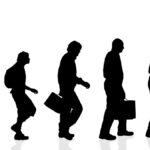
Real World Muscle Gain
For those that know my fitness journey, I have been doing some form of endurance sports for 20 years now. My first triathlon was in 1998 at age 24, which led to 4 years later competing as an elite racing Ironman and Half-Ironman triathlons until 2007. Prior to age 24, most of my exercise consisted of lifting weights and surfing. Often I would lift weights 6x a week and my weight hovered around 170 lbs (I am 5′ 11.) Triathlon competing and training changed my body (and fitness of course!) My racing weight was 155 lbs and my off-season weight was 160 with my body fat ranging from 5-10%. The last several years I have remained very active, but train about 75% less than I did in those early years. I still compete in triathlon and running races periodically but my main focus now at age 44 is on optimal health.
The last 3-4 years I have found myself going back to my overall fitness roots and lifting more and running less. Being 155 lbs and quite lean for sometime now, I thought I would do a little experiment on myself and set a goal of gaining 10 lbs of muscle in 4 months all while staying lean. Knowing my body extremely well at this point, as well as my nutrition knowledge I set forth some strength benchmarks to hold me accountable. On January 1st I measured my body-fat with an Inbody machine at work and my numbers were the following:
January 1st- Weight-159 lbs. Body-fat-10.2% Skeletal Muscle Mass-81.1 lbs.
The last 2 months I have varied my weight lifting routine anywhere from 4x a week up to 7x a week and every 2 weeks I switch from low reps of 2-6 to higher reps of 8-15. I also have maintained 25-30 miles of running every week which includes a long run of 10-16 miles, a hard run with 3 miles of intervals or a 5k race, and another short run at an easy pace. After 2 months I decided it was time to test my progress.
March 1st- Weight-162 lbs. Bodyfat-6.7% Skeletal Muscle Mass- 86.2 lbs.
My results showed an increase in overall body weight of 3 lbs, but I gained 5.1 lbs of muscle and my body-fat dropped 3.5%. I could tell my body was changing due to my shirts fitting somewhat different and my strength benchmarks ( squats, benchpress, pull-ups,) were improving also. I was 90% certain I could attain this goal ( or at least somewhat build towards my 10# goal!) I listed below the key take-aways form this and how it can apply to anyone looking to get fit, add muscle, or drop body-fat.
- Know your body and listen to it- This is critical and can take several years to learn. Recovery, durability, life obligations, sleep needs, etc can all factor into the outcome. If something in your body isn’t feeling right or you have incredible amounts of fatigue then its best to take a day off. Like I have said numerous times “1 workout won’t help you, but 1 workout can definitely hurt you.”
- Rest- I don’t know anyone that works the same muscle group within 24 hrs. but some get results working them every 48 while others do every 72 or more. I was consistently in the 48-72 hour range and recommend this for most everyone.
- Vary your routine and get it done swiftly- This was something I changed every 2 weeks between low reps of 2-6 with more rest between sets (60-90 seconds) to higher reps of 10-15 with 30 seconds rest. Don’t spend more than 40 minutes lifting so have a plan, execute, and then leave.
- Compound movements- I can’t stress this enough, you want to work compound movements that work large muscle groups at the same time. Spending a lot of time on small muscle groups like biceps, triceps, and calves isn’t the best use of your time!
- Count your macronutrients- For the last 10-15 years I have eaten a high fat diet sometimes up to 60% of my total calories consumed. For this experiment I dropped my caloric fat percentage to 40%, increased my carbohydrates to 35% and increased my protein up to 1 gram per pound of bodyweight. I also added an additional 500 calories to my diet to aid in adding mass.
- Don’t be afraid of carbohydrates- To gain weight you need to eat more carbs, thats the bottomline. Eating the right carbohydrate’s is important so I always recommend them in the form of veggies, limited fruits and grains and keeping your fiber upwards of 35 grams. (eating a carbohydrate percentage over 25% is a not good idea unless you are trying to add muscle.)
- Hormone manipulation- Adding muscle and/or increasing your fitness takes some hormone manipulation. For adding muscle you want to stimulate IGF-1, testosterone, and growth hormone. IGF-1 can be increased by eating more protein, testosterone and growth hormone can be increased by intermittent fasting and works great for both adding muscle and dropping body fat.
- Don’t forget cardiovascular exercise- For me, I needed to watch out how many miles I was running and not to “burn off too much muscle.” Short, high intensity cardiovascular exercise has shown to actually increase critical hormone levels, but long slow distance does the opposite (catabolic.) This can vary tremendously amongst individuals and I recommend a hormone check for everyone over age 35.
- Timing of meals and macro’s- Everyone should intermittent fast no matter what their fitness goals. I recommend everyone eating all their calories in a 6-10 hour window. An efficient strategy for adding muscle and eating would be 2-3 hours after your workout get your first meal in with an emphasis on higher protein, a second meal 2-3 hours later of a slightly less percentage of protein, and your final meal consisting of a higher percentage of carbohydrates. Current nutrition trends are showing this strategy works for almost everyone unless you have insulin sensitivity issues and then you need to watch how many carbohydrates you consume each meal.
- Don’t forget about your legs- Countless times I have walked into a gym and see everyone exercising their upper body muscles but neglecting their legs. This is a huge mistake! Squats and Deadlifts are 2 of the most important exercises you can do. They not only work the big muscle groups in your legs, but also provide an anabolic response (related to #7 on this list.)


